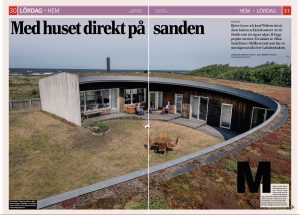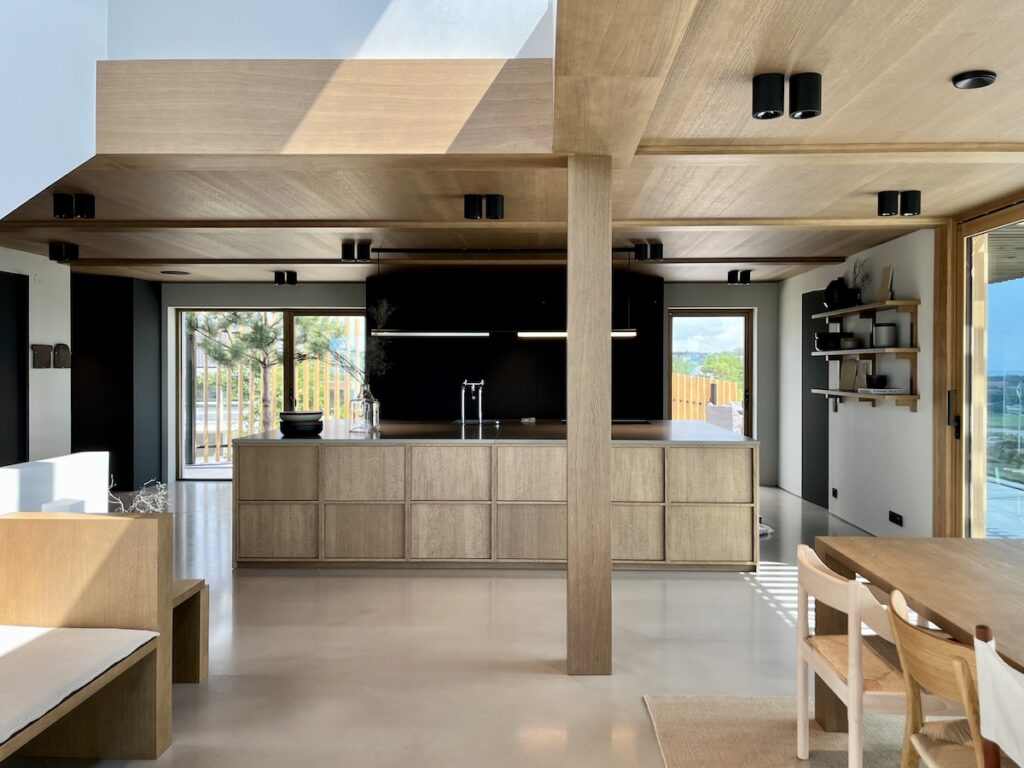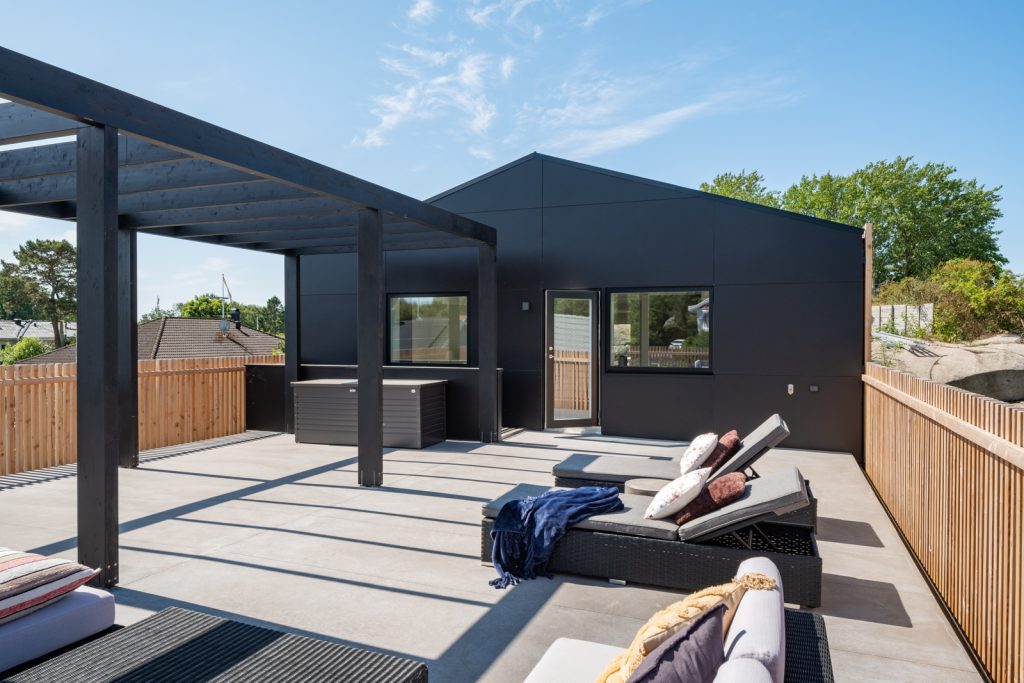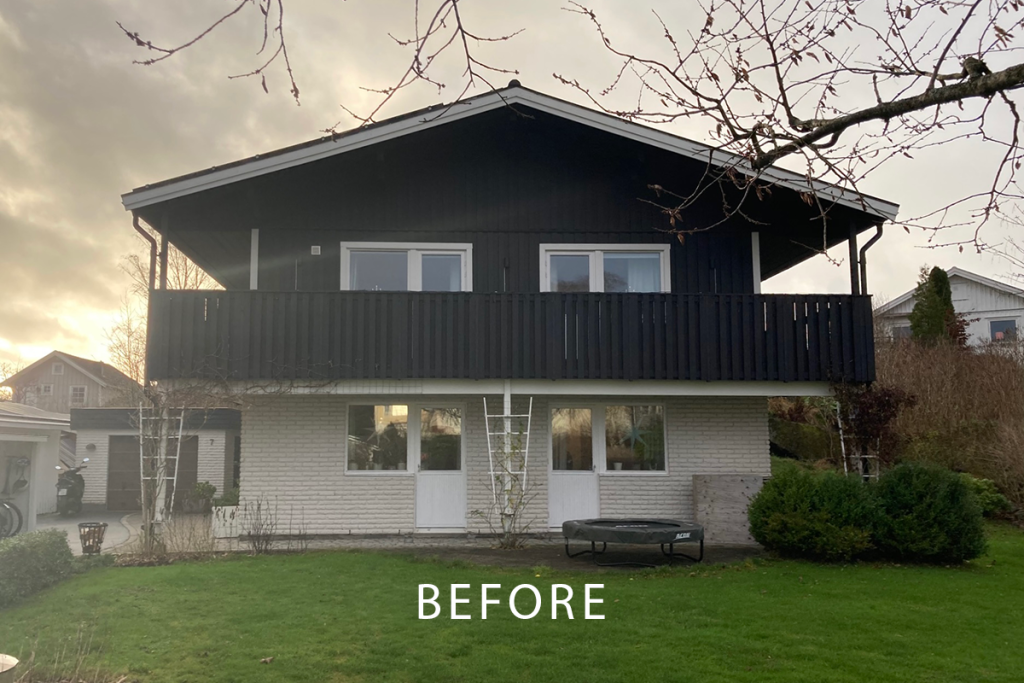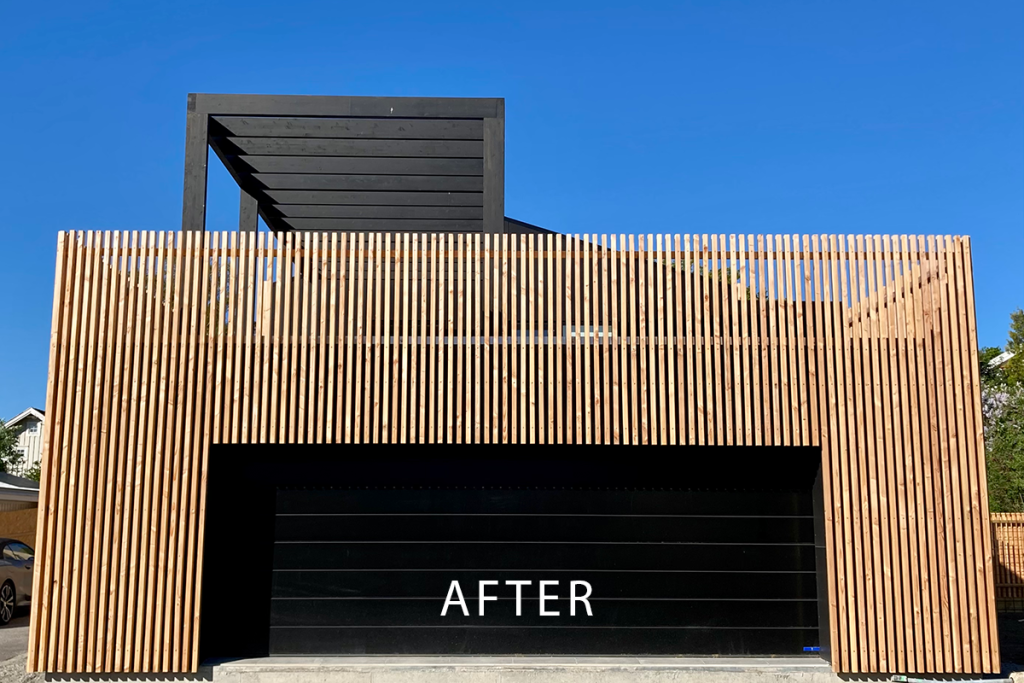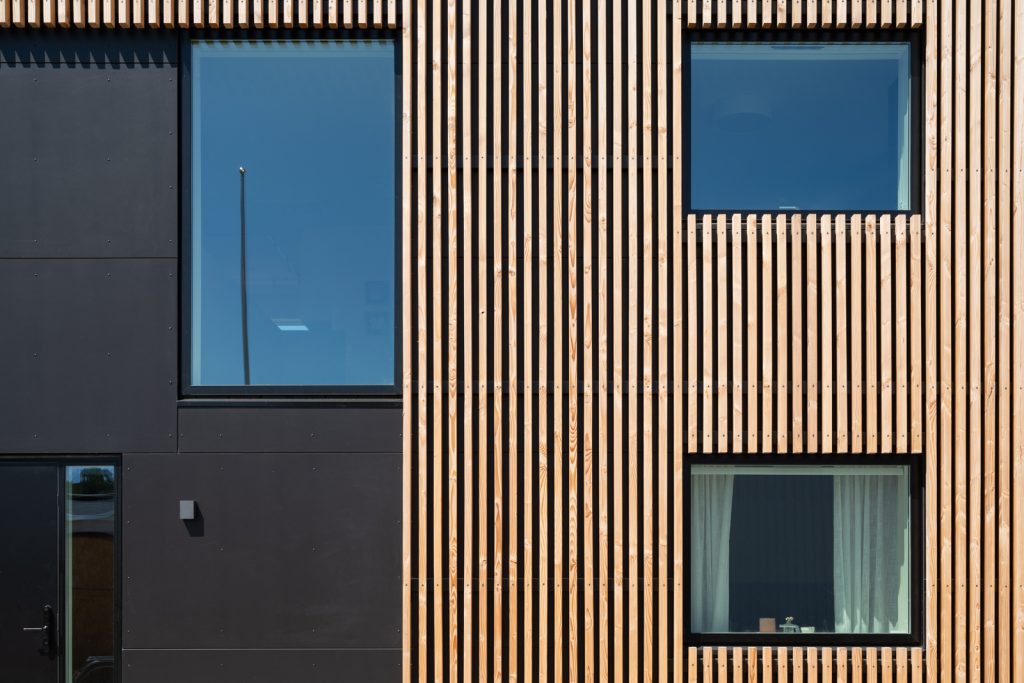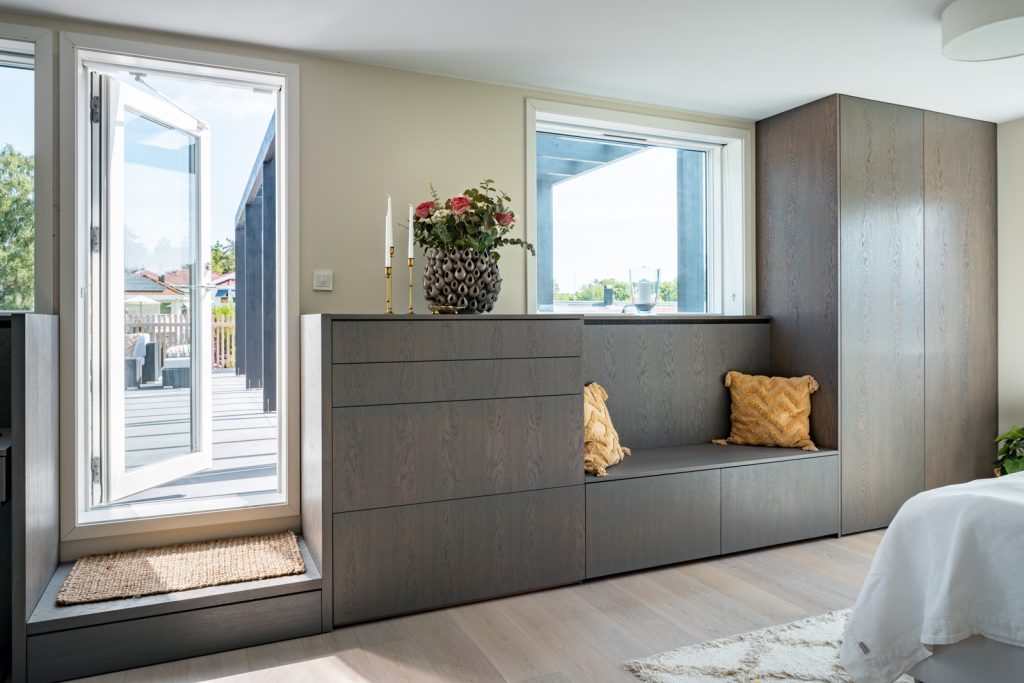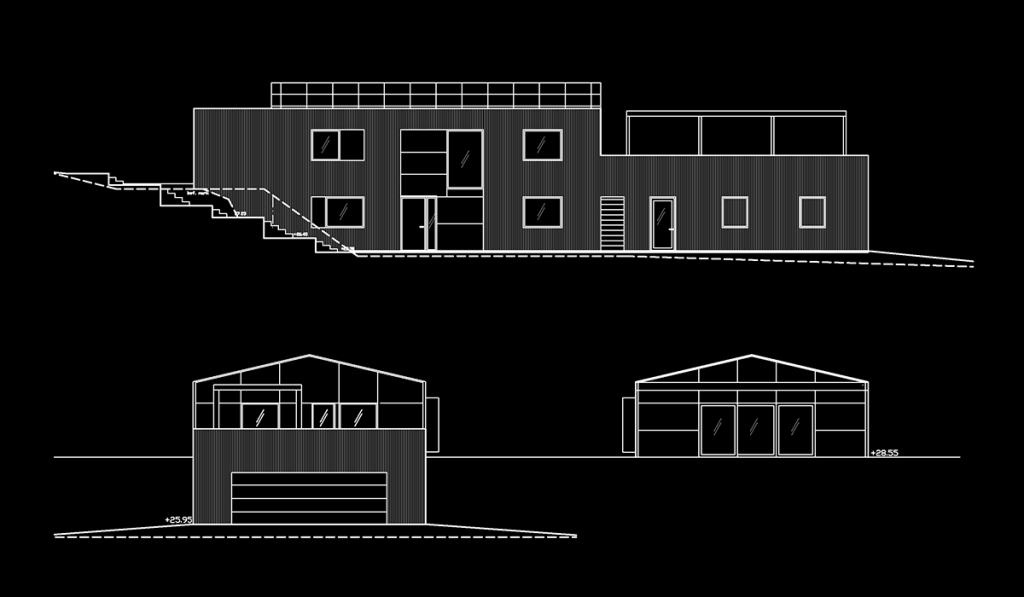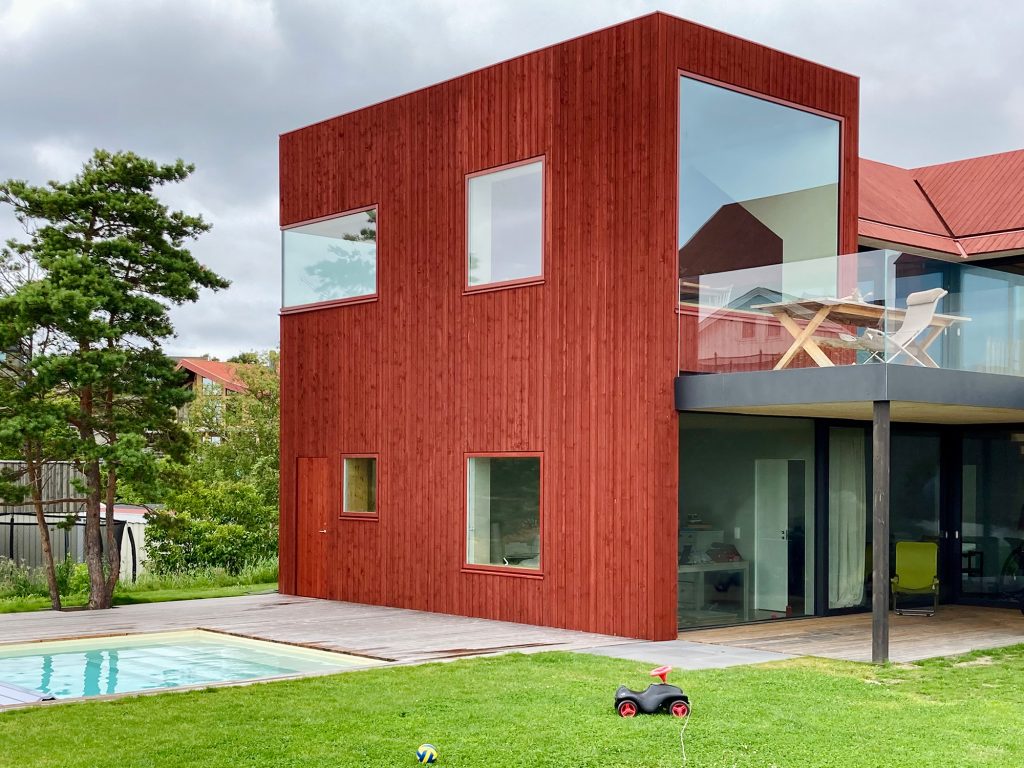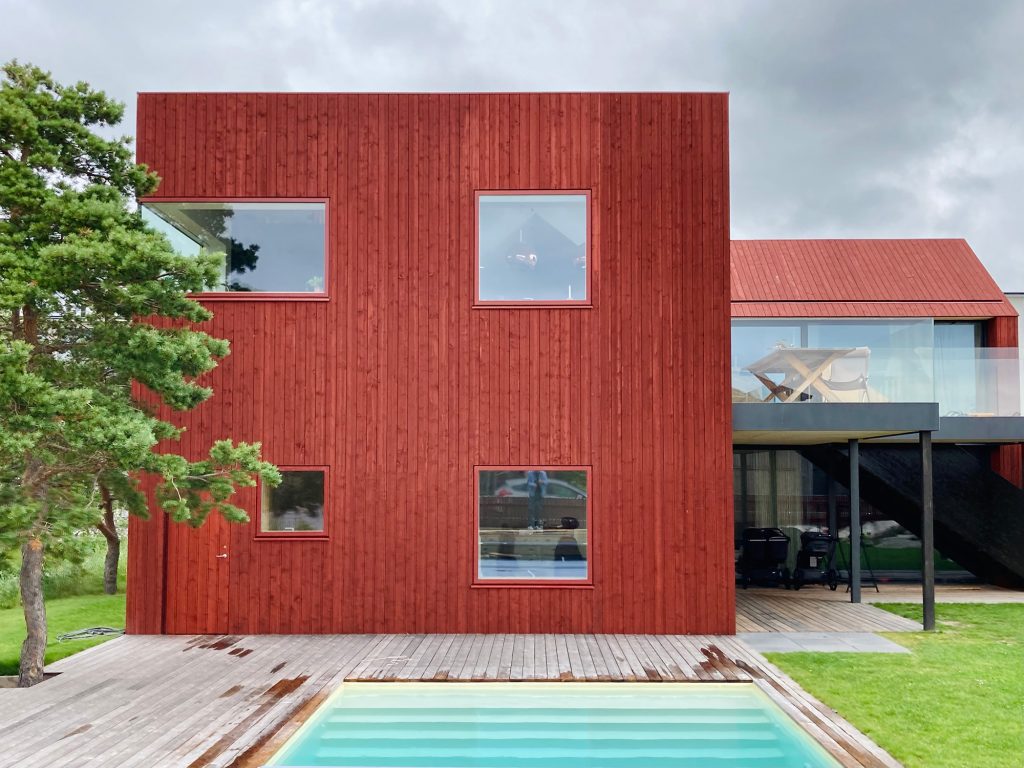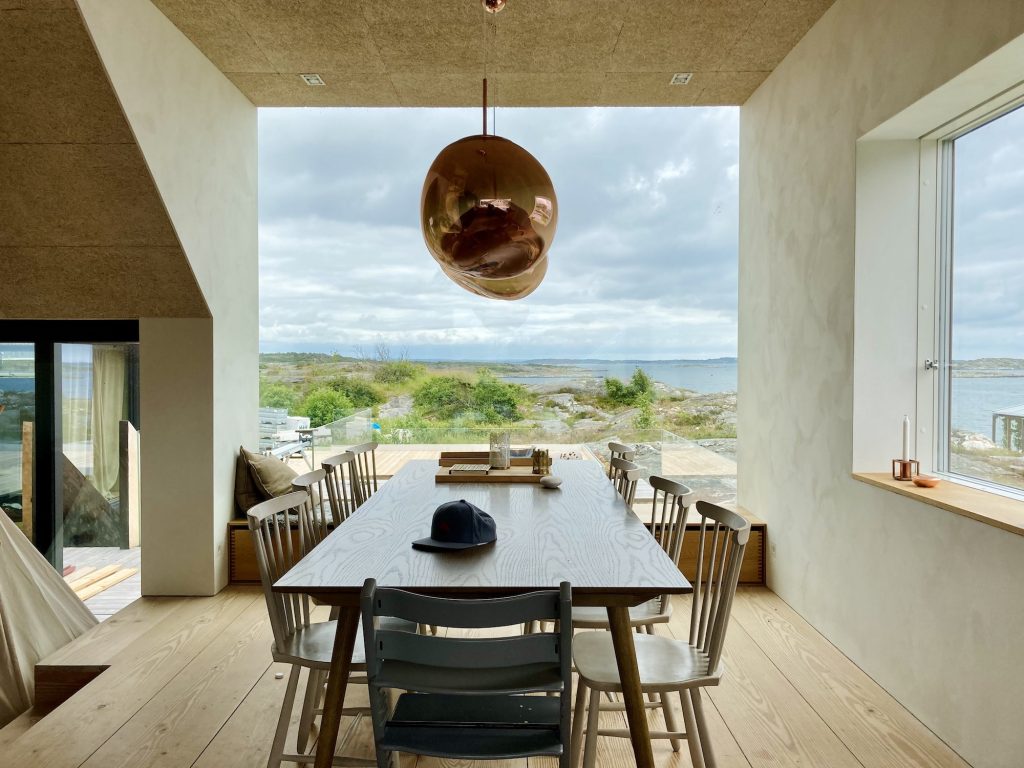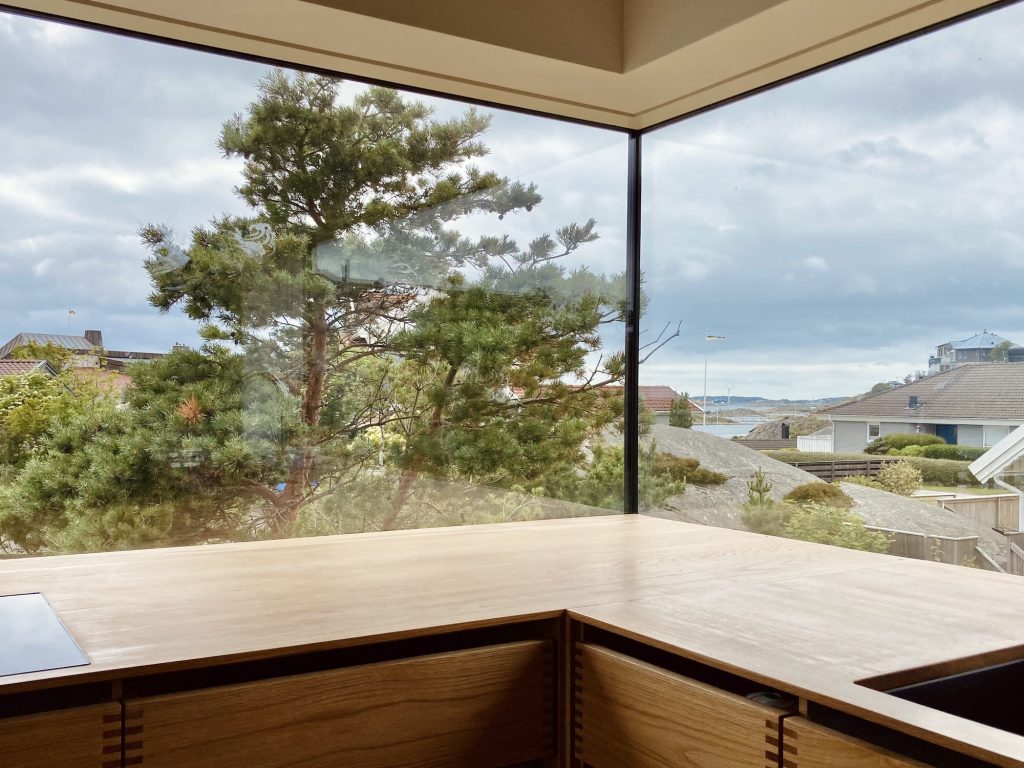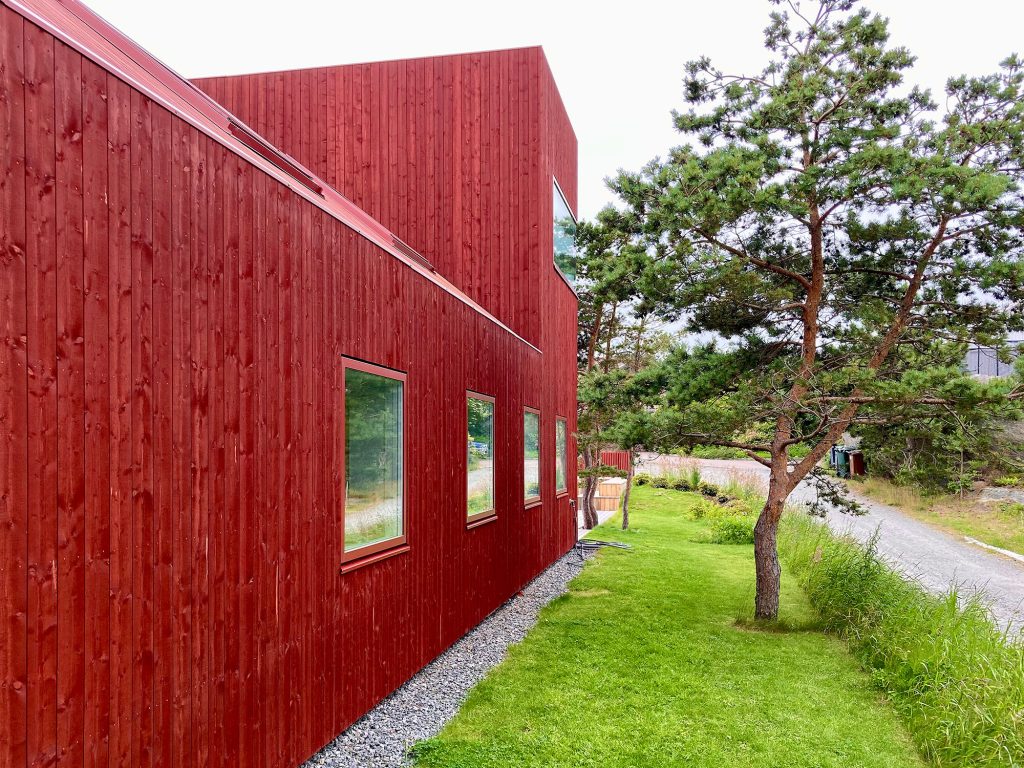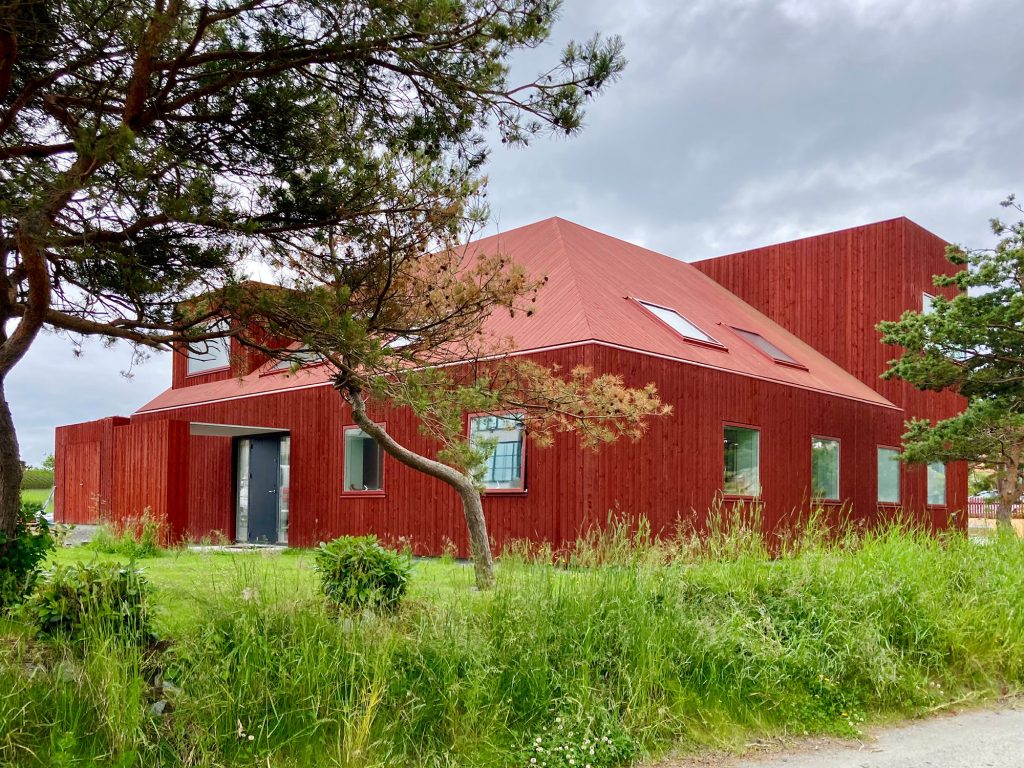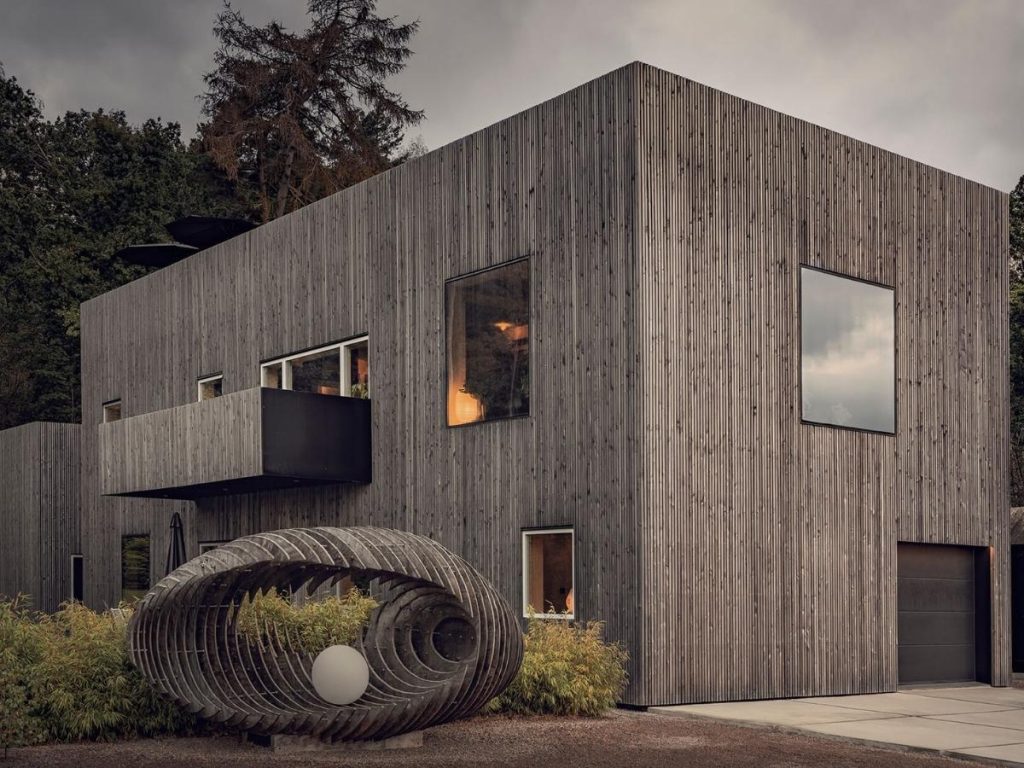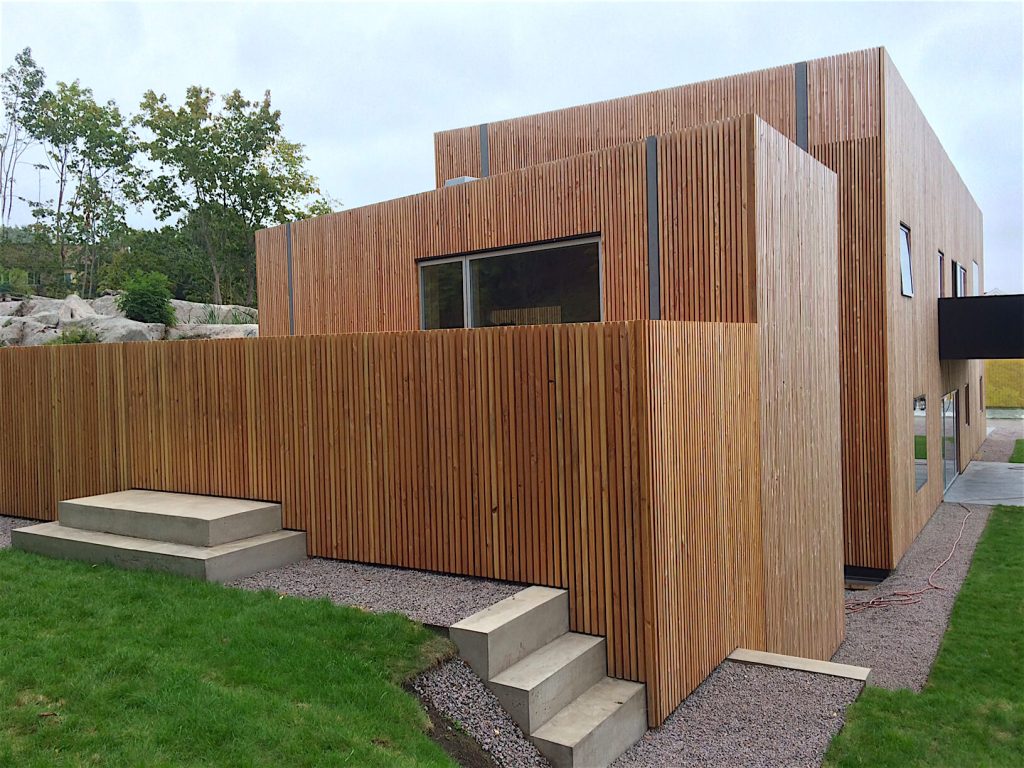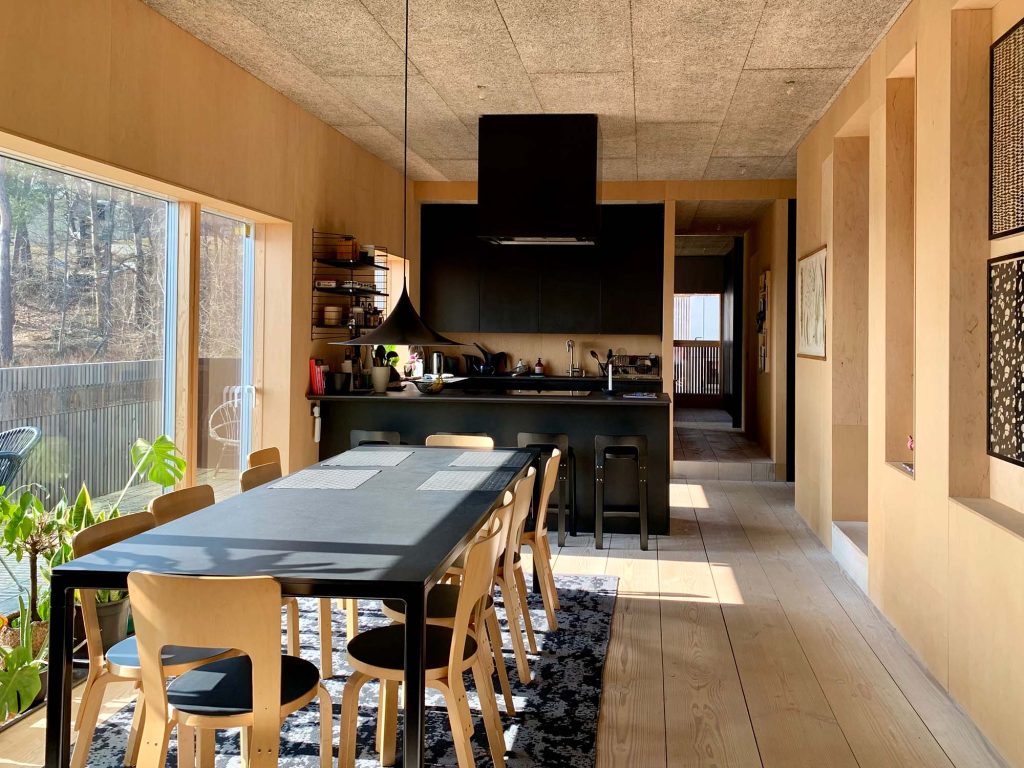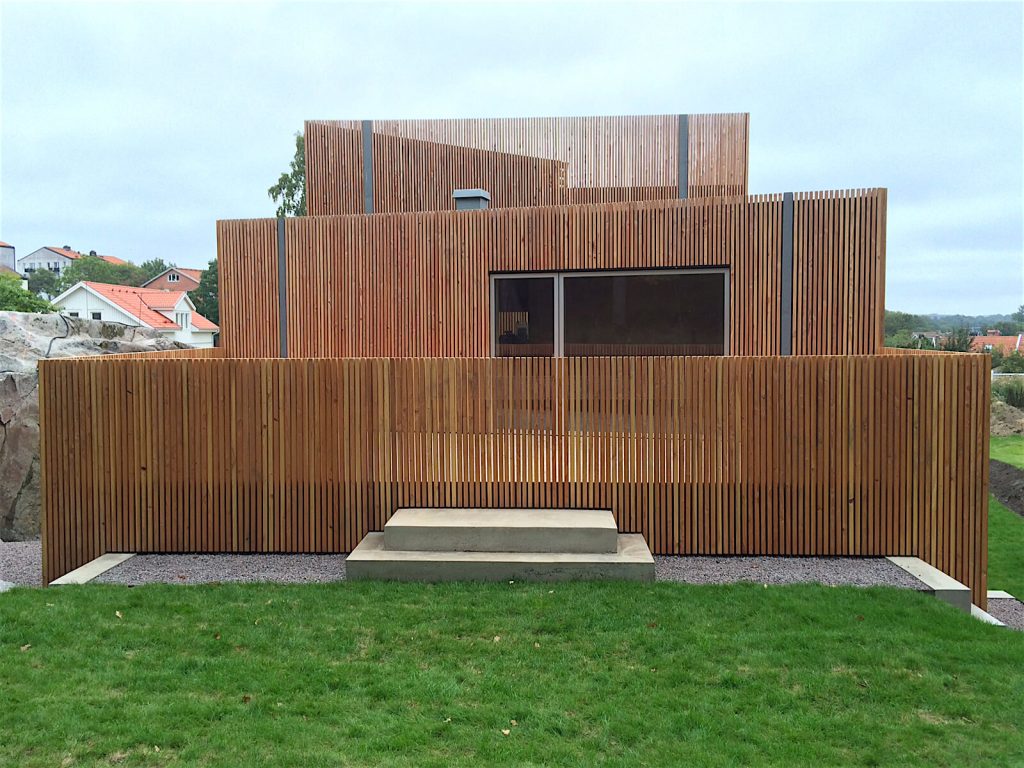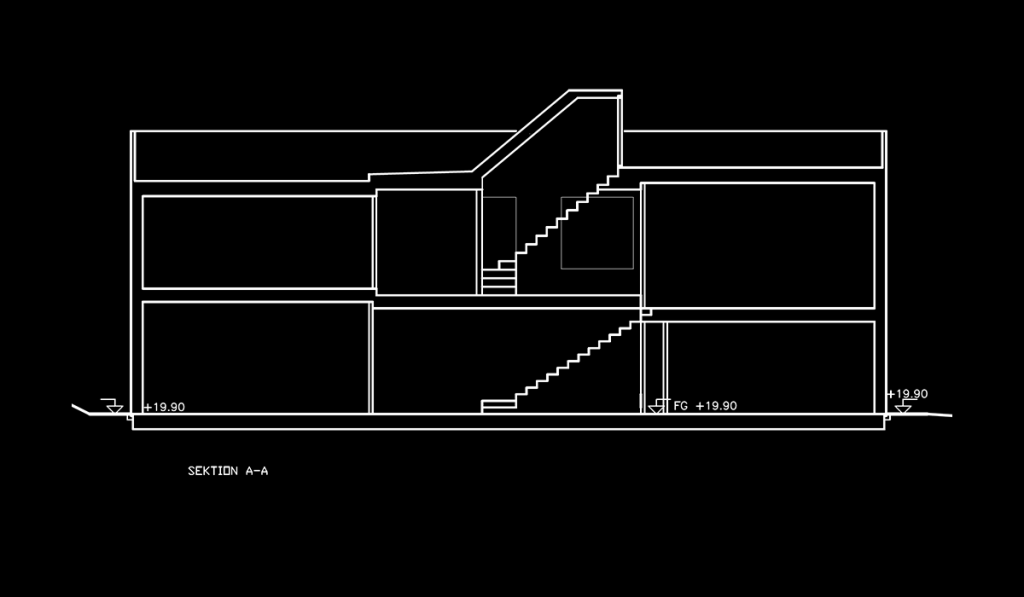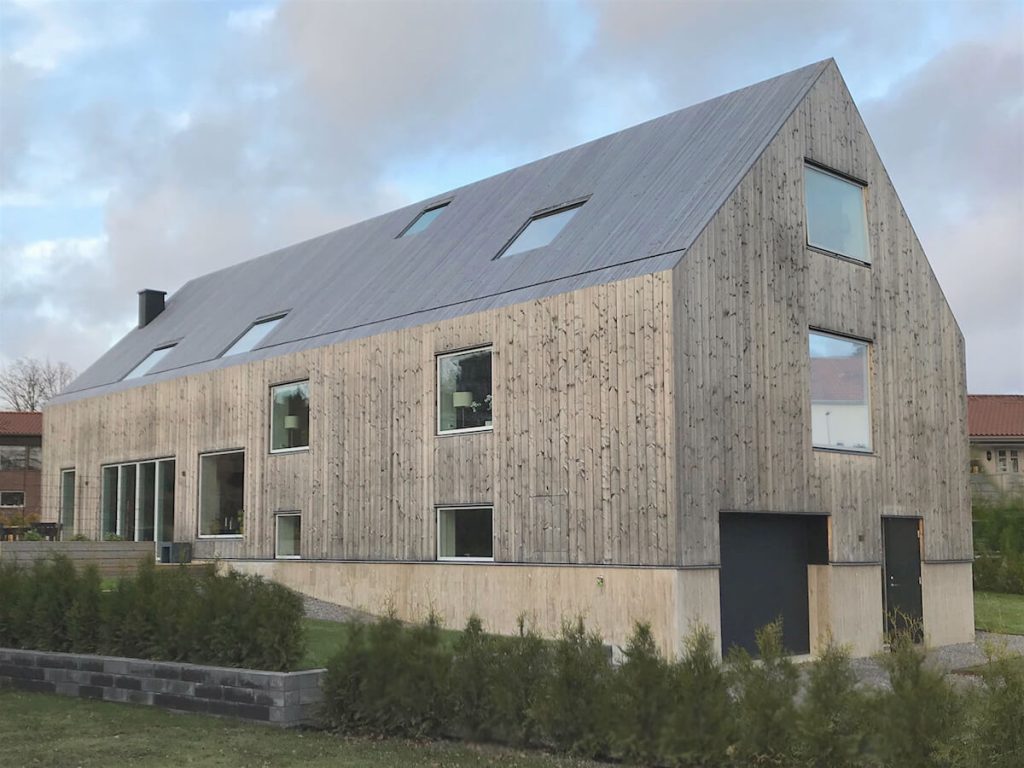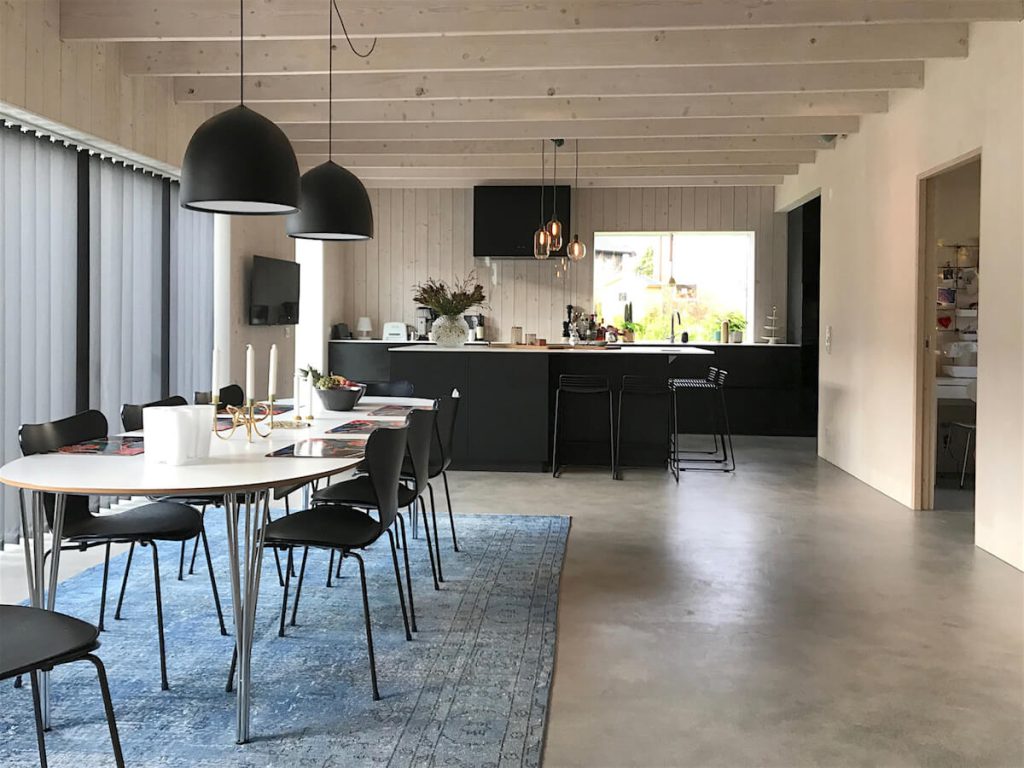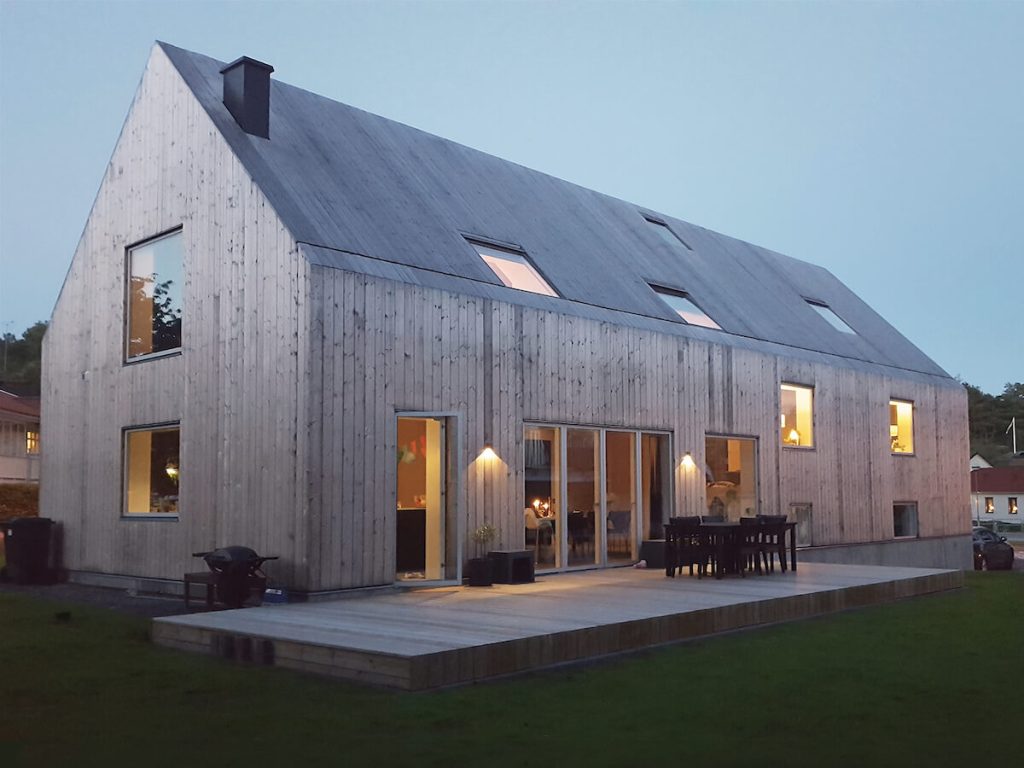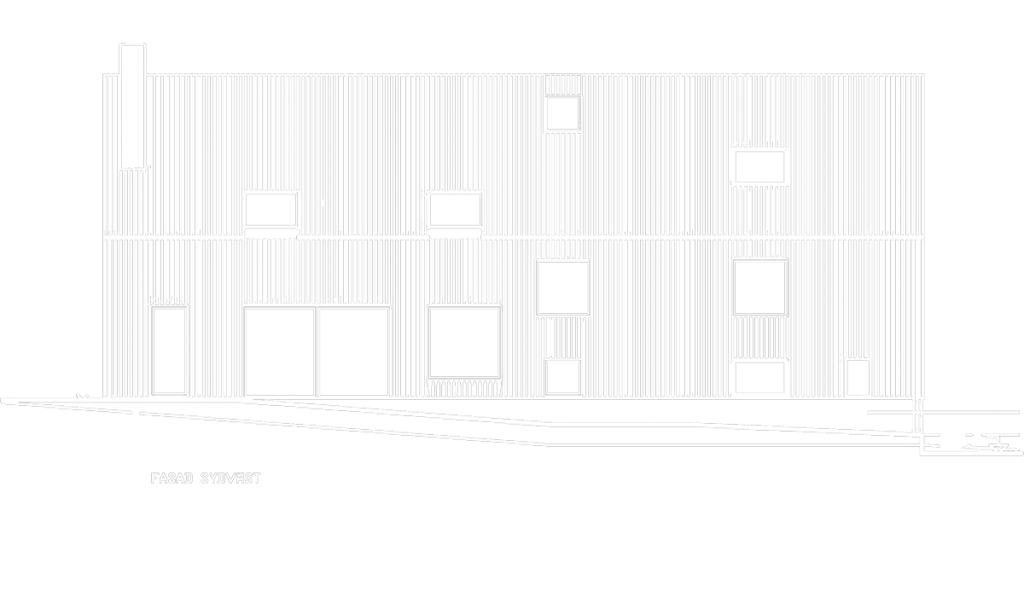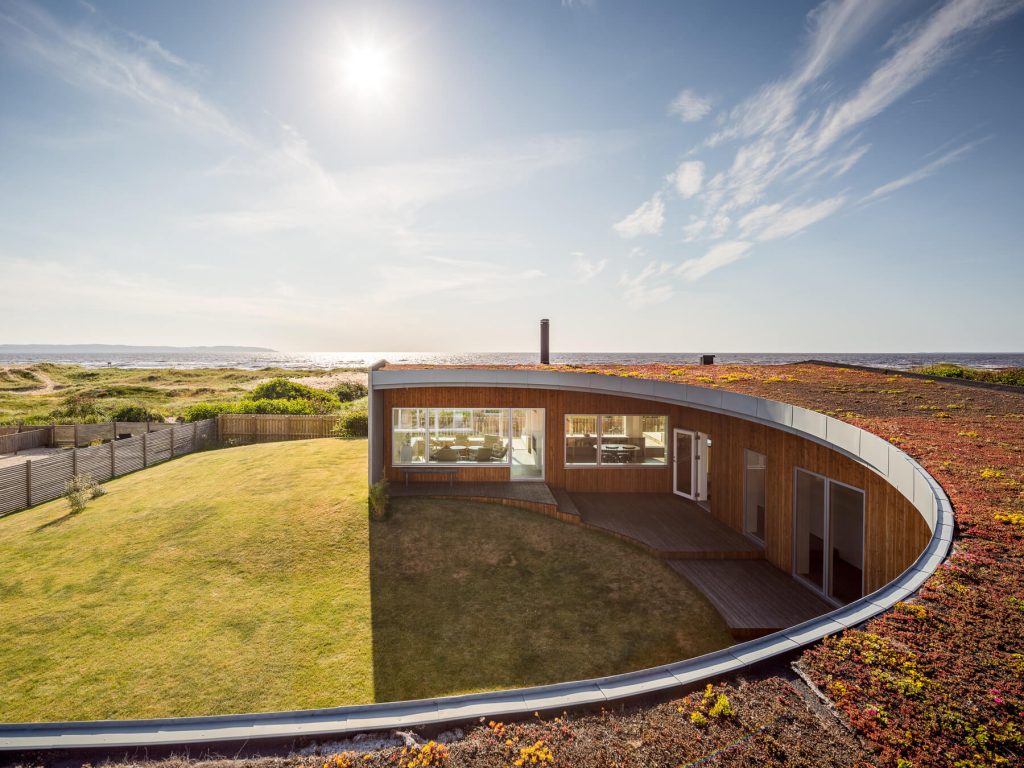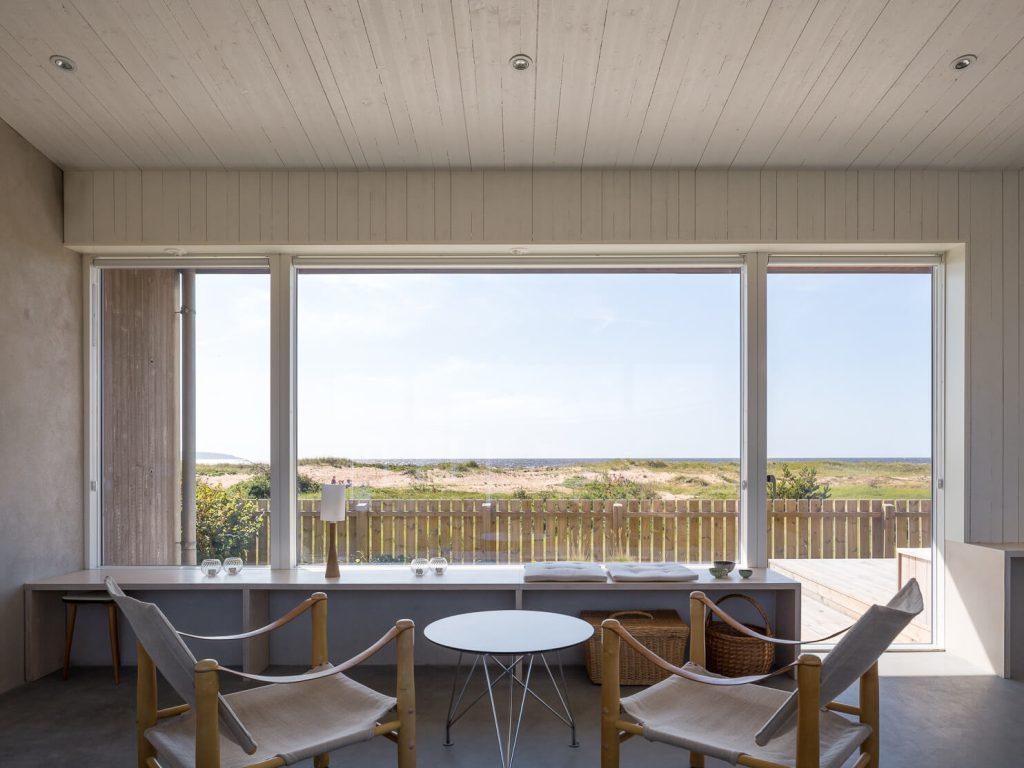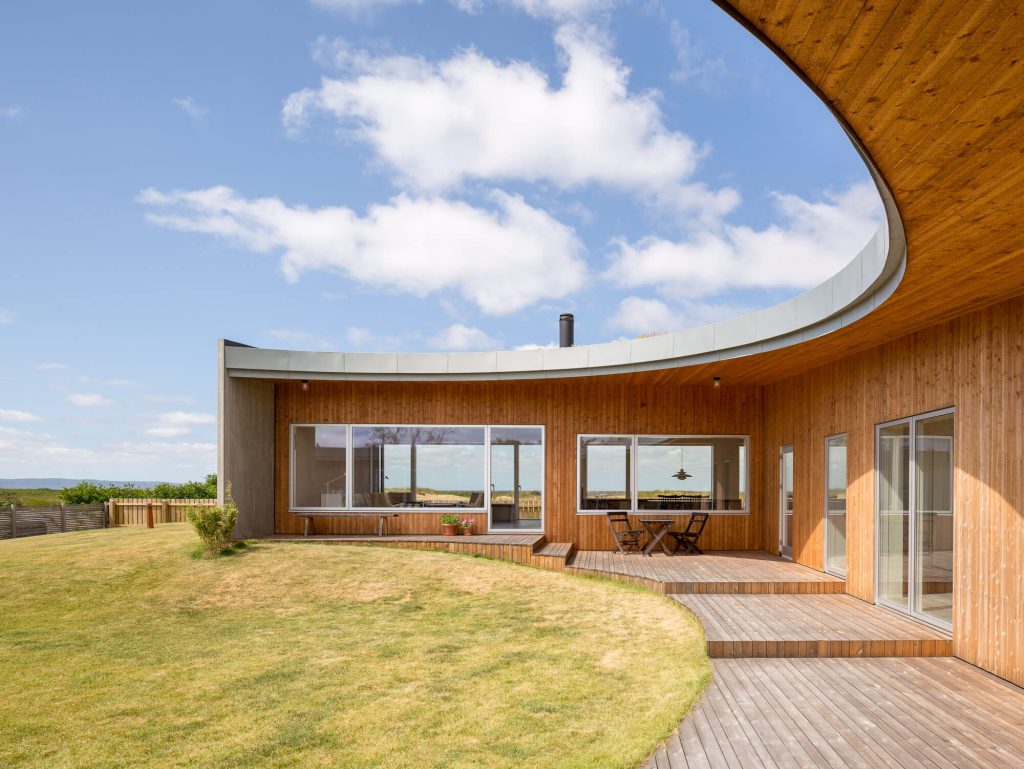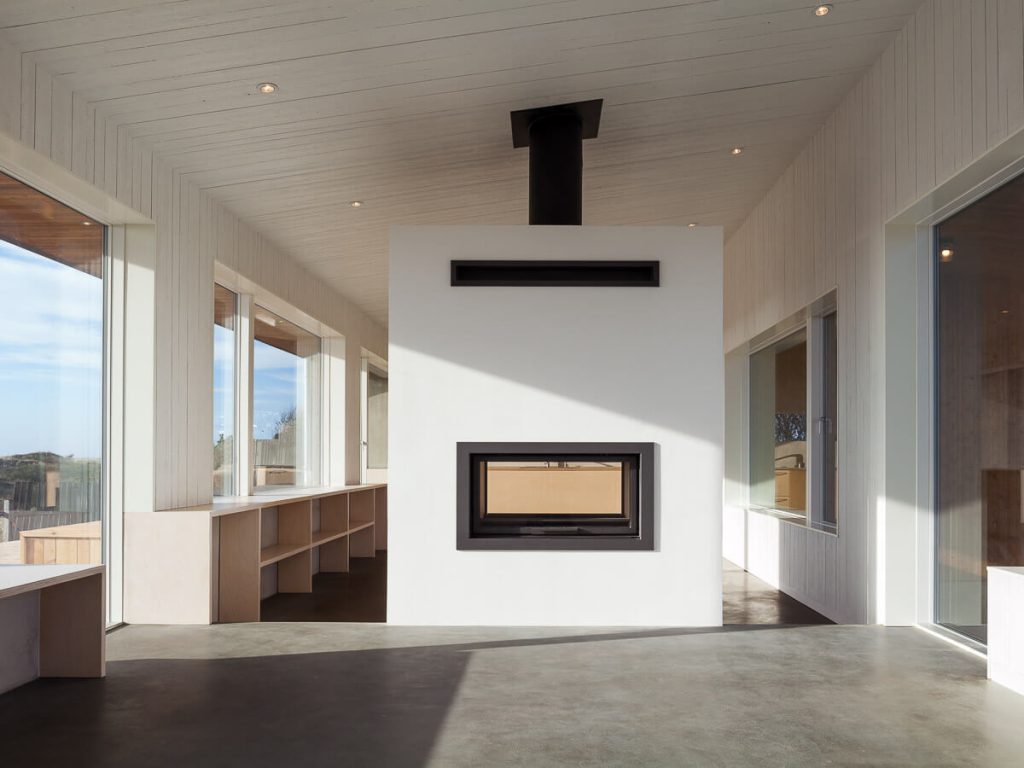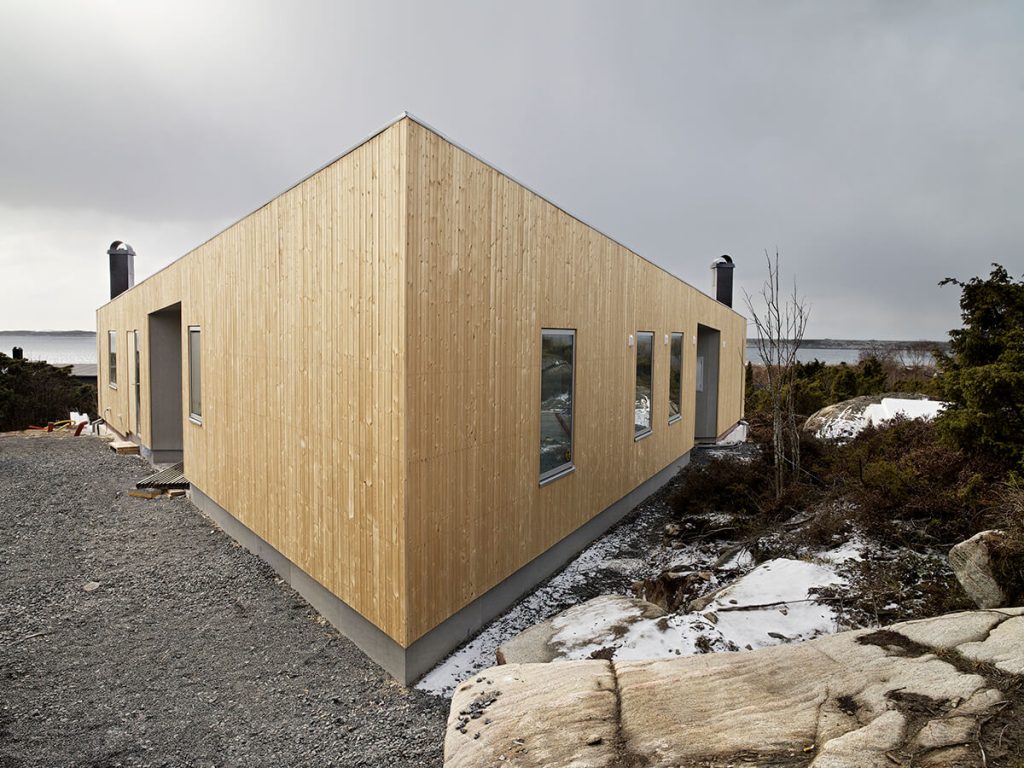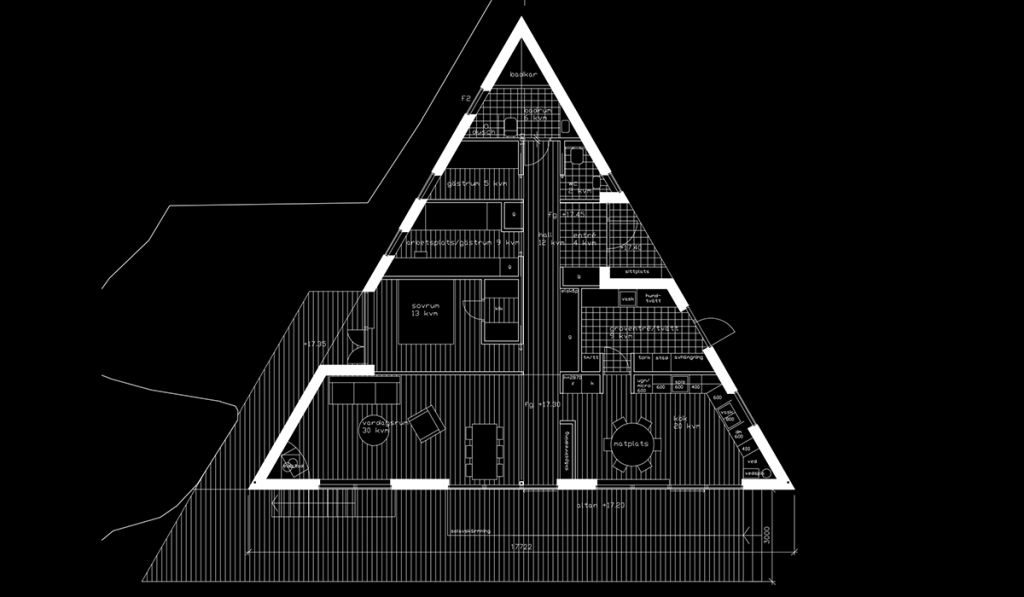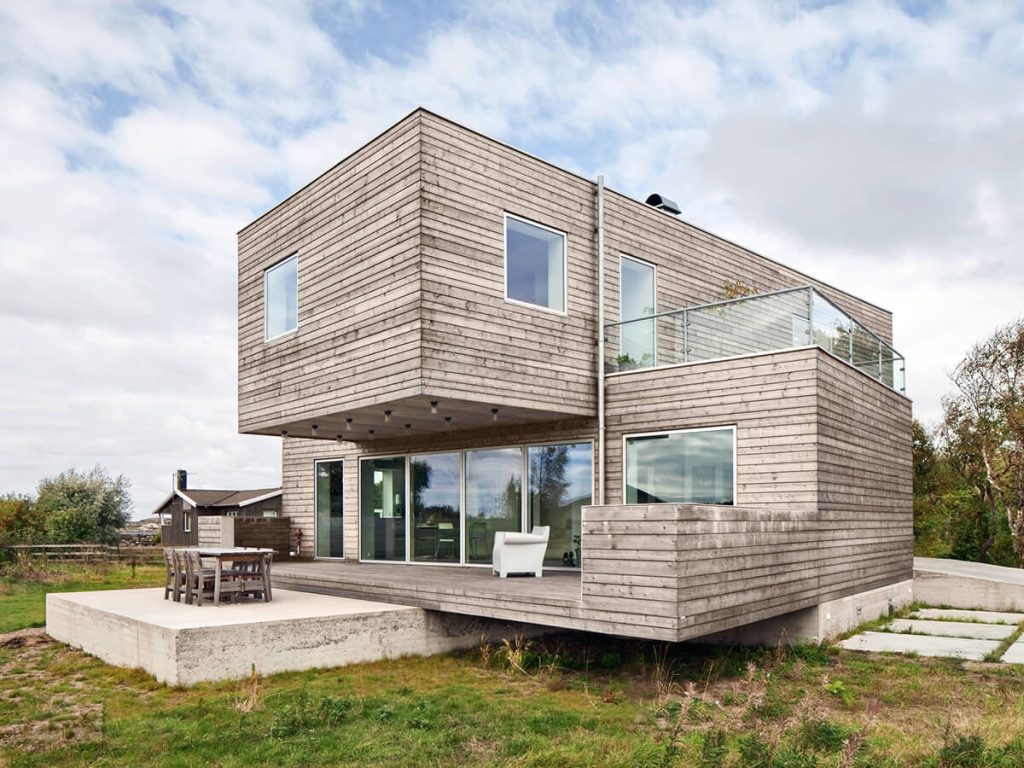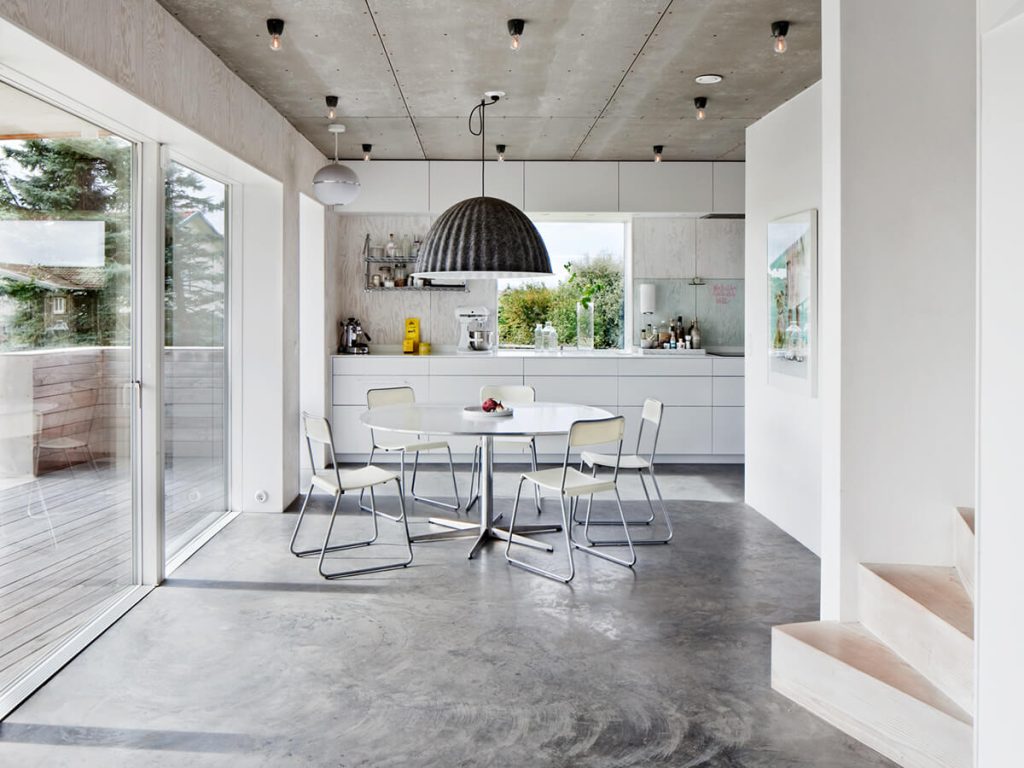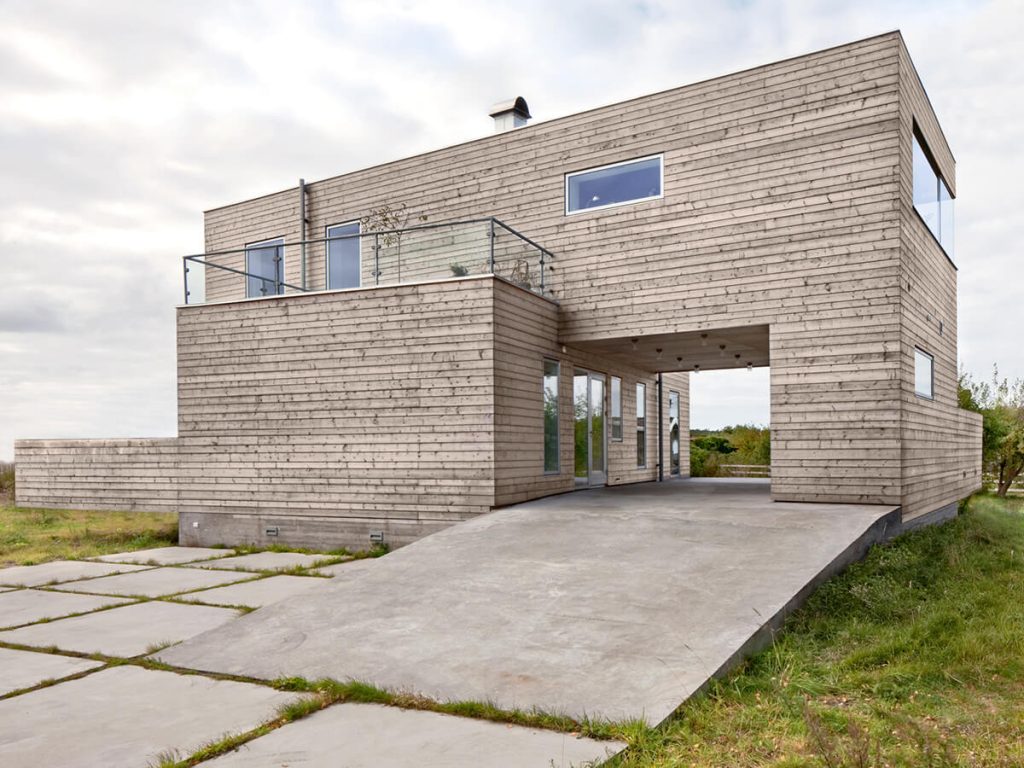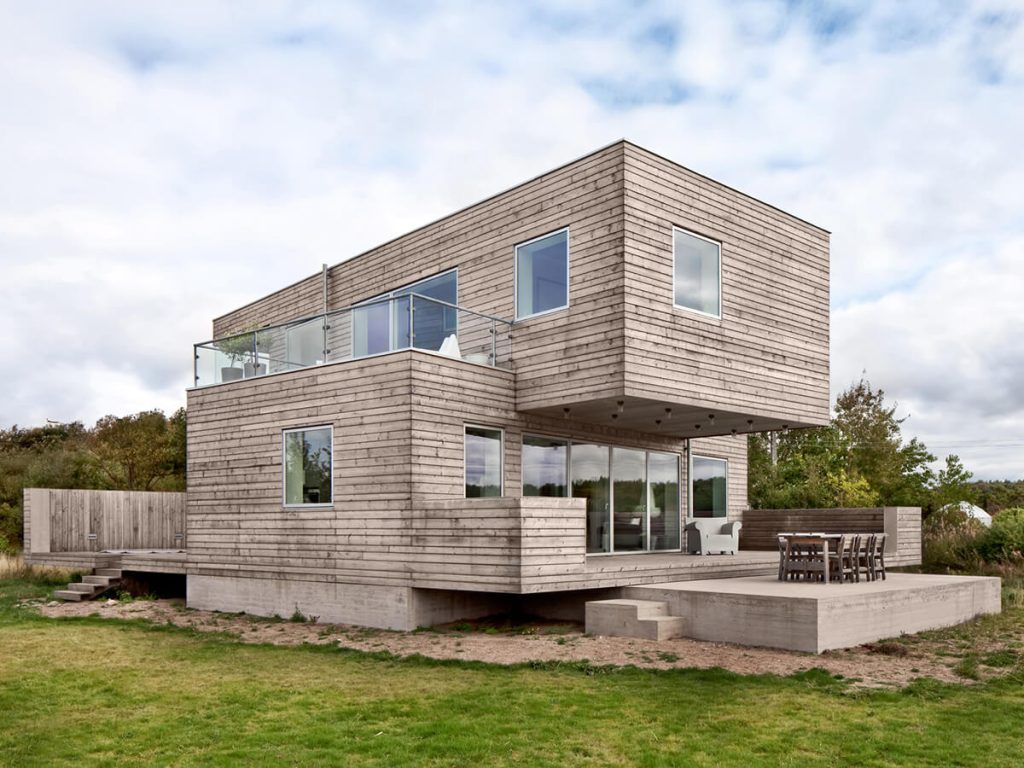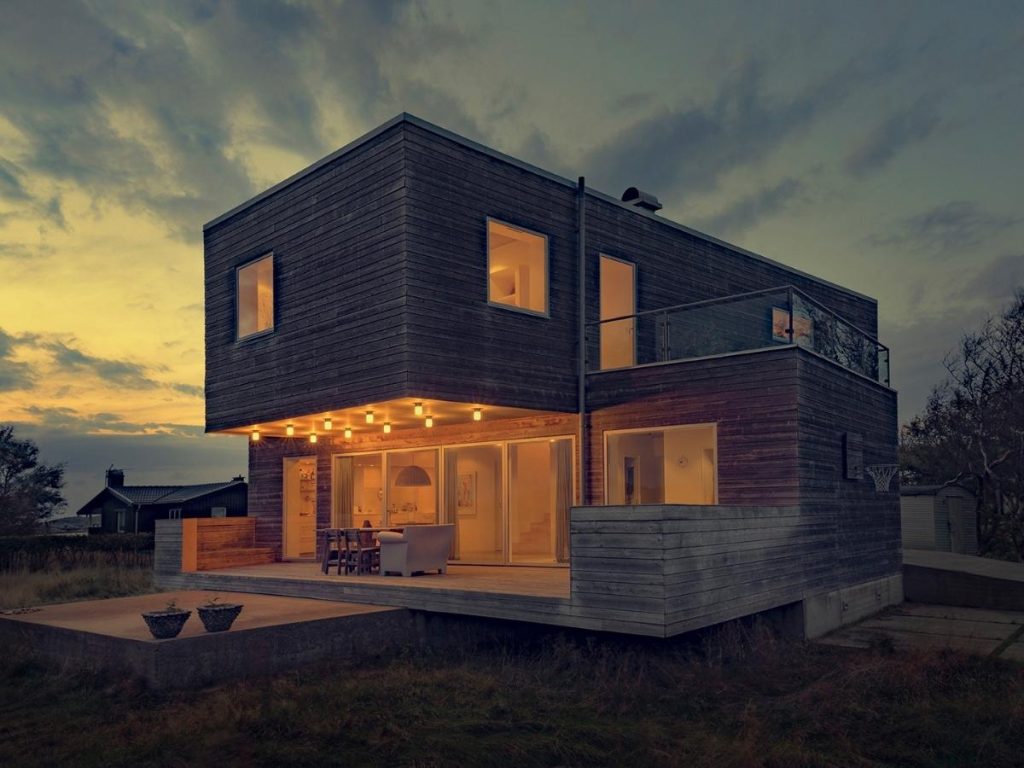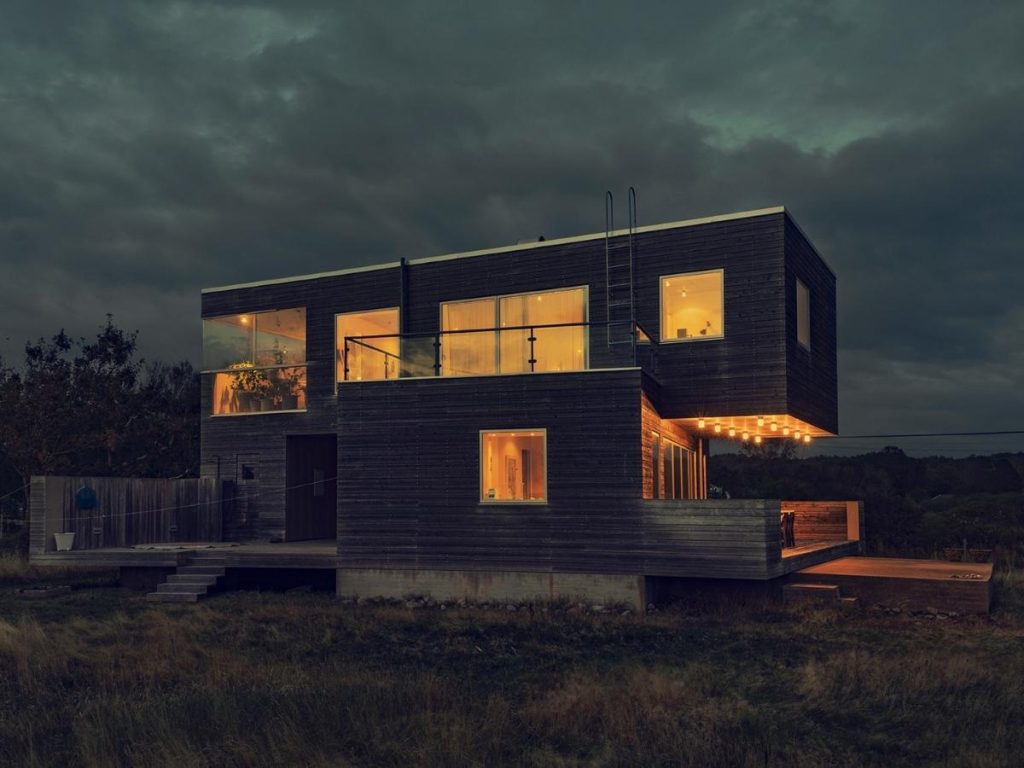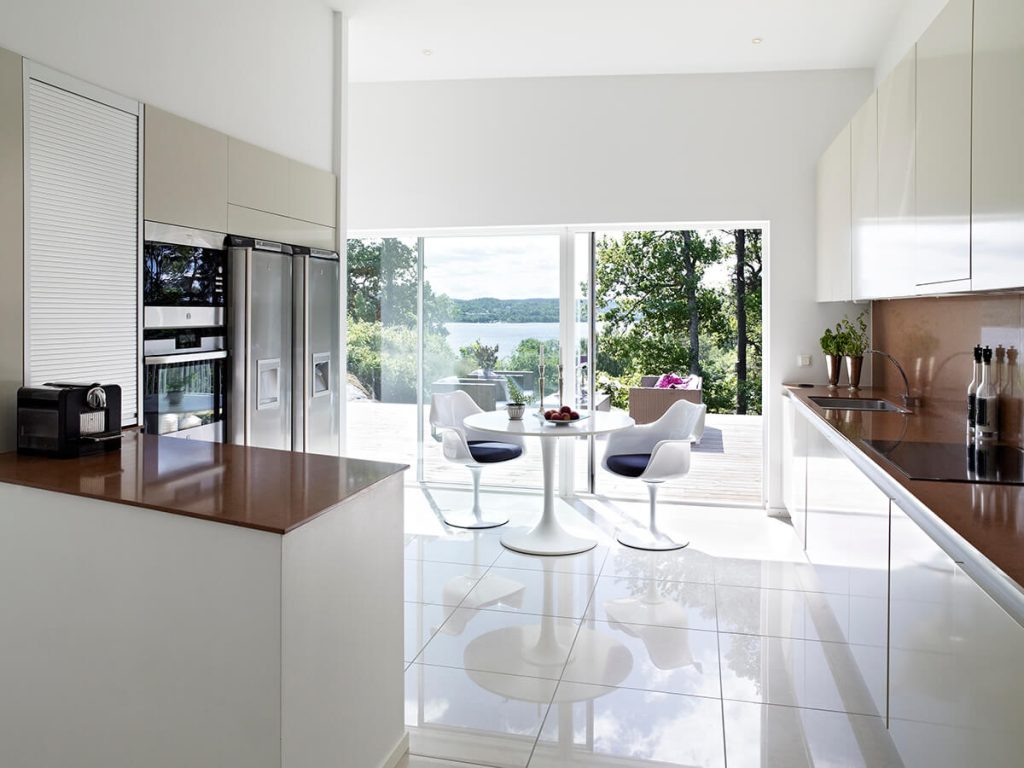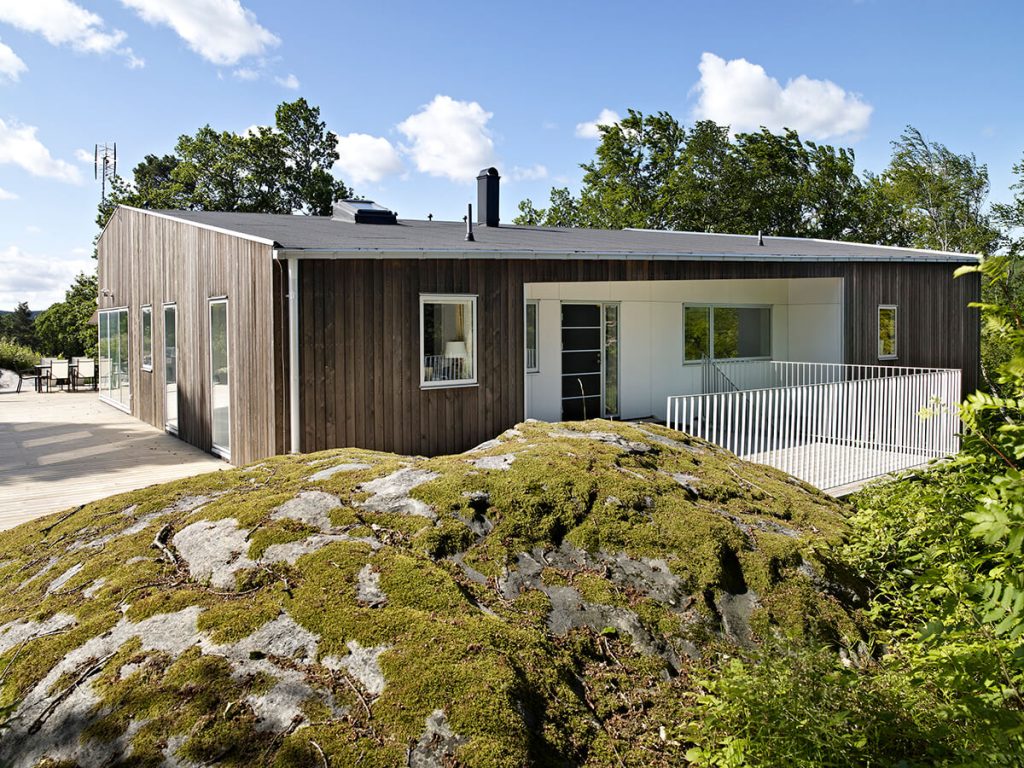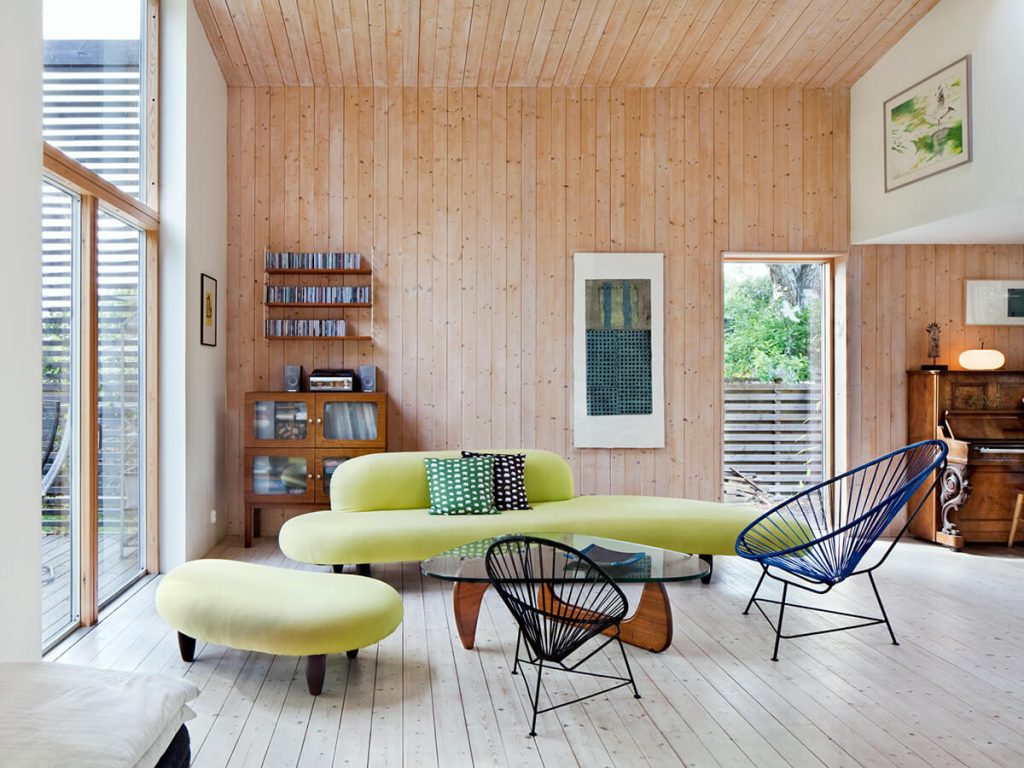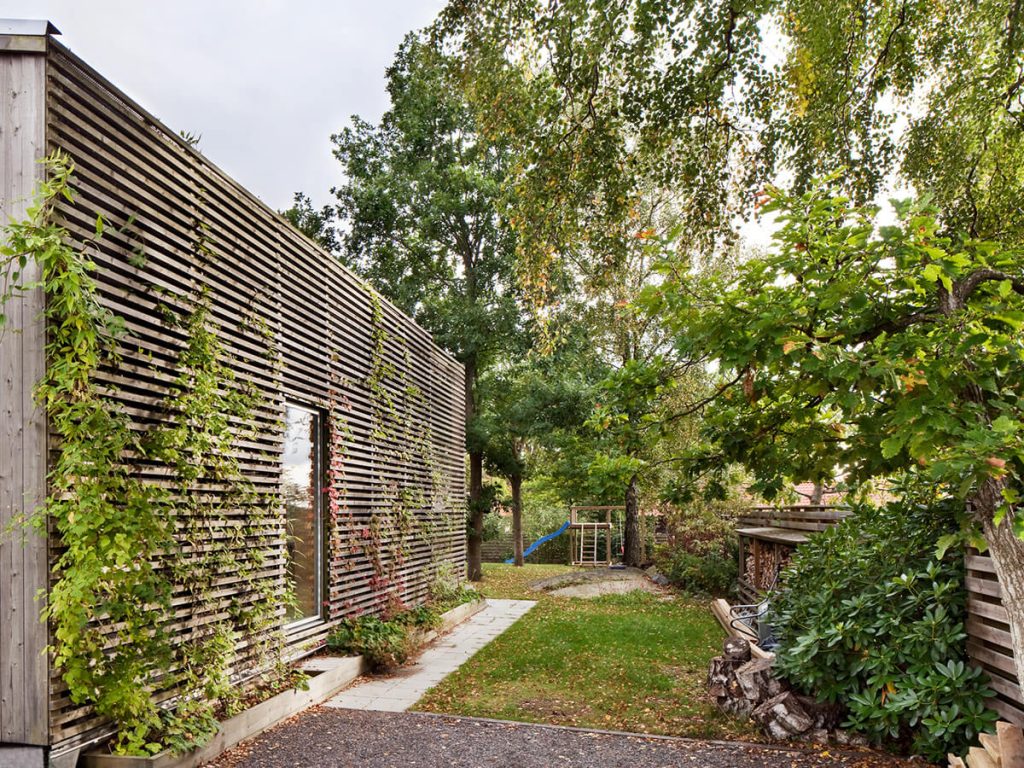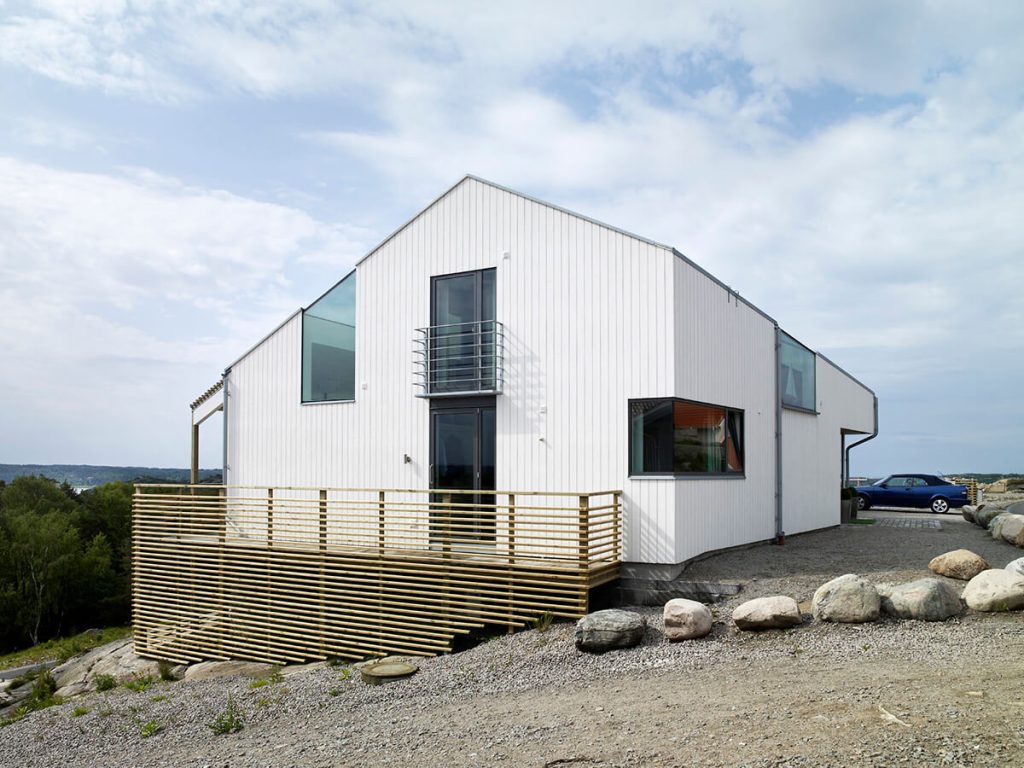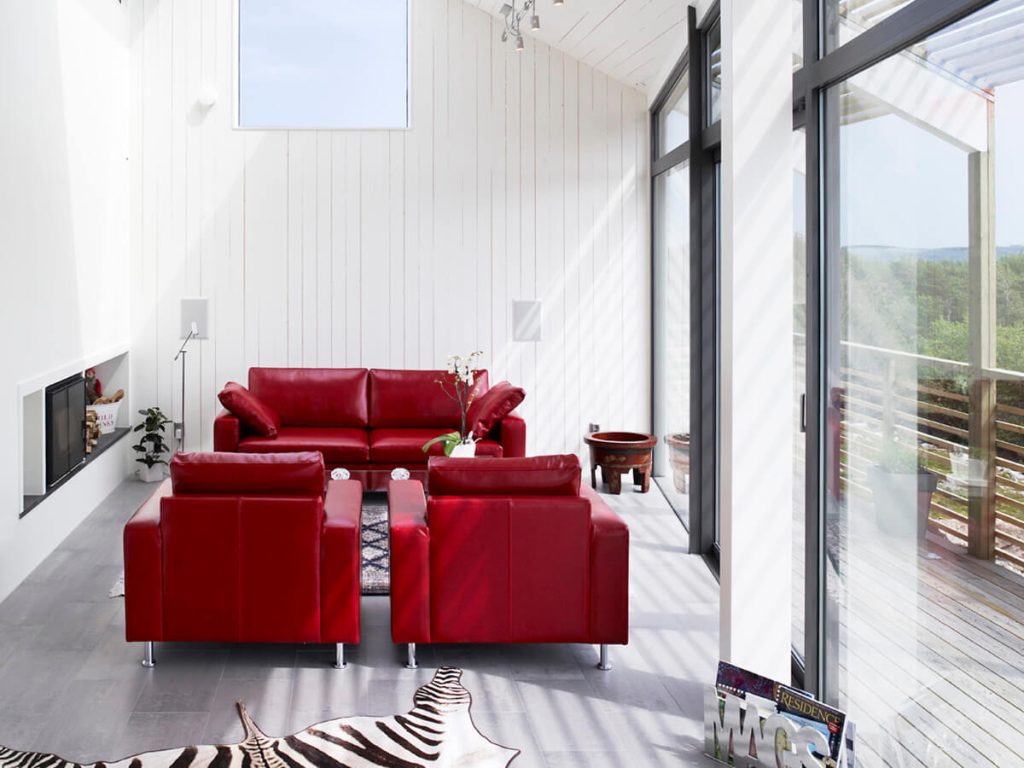Arctic studio
- Architects in Gothenburg, Sweden
realizing unique buildings at unique locations
Projects
LEVELS
- Year: 2025
- Size: 450 sqm
- Location: West Coast of Sweden
The concept for this building is a separation in three levels with distinct materials; a base of stone, a second level covered with wood laths, and a top floor covered with mirror glass.
This project was an interesting challenge, as the client gave us a high degree of freedom, while the municipality rules were quite strict and limiting. Adding another level of complexity, one condition was to use the footprint of the previous house on this site as the outline for this new house.
The interior has a high level of quality in choice of materials and furniture. The interior spaces are fluent and dynamic and closely related to the exterior spaces on all sides and levels.
Architects: B. Gross & J. Wideström
Collaboration: Lotta Agaton Interiors
Clients: Family of five
Building contractor: J. Schramek, LMR
- Base of granite stone
- Second floor covered with fur laths
- Top floor covered with mirror glass
TRANS FORM
- Year: 2023
- Size: 280 sqm
- Location: Kullavik, Kungsbacka
The Transform project is a total makeover of an 80’s brick and wood villa into a contemporary house. In order to get permits for an additional 90 sqm, the roof extensions and balconies of equally 90 sqm were removed.
The house now features a roof terrace on top of the new guest and garage wing. The whole house is wrapped in black cement boards. As a second layer, most of this black core is covered with douglas fir laths, leaving openings and creating outdoor spaces.
Architects: B. Gross & J. Wideström
Clients: Holmström family
Building contractor: LMR Entreprenad
- 1. Cut roof extensions and balconies
- 2. Add guest and garage wing
- 3. Wrap in black boards and fir laths
RED ARROW
- Year: 2022
- Size: 240 sqm
- Location: Hjuvik, Göteborg
The distinctive shape of this house is a result of very specific regulations regarding maximum height of the roof, for both top ridge and bottom eave, the maximum built area and the stipulated red color of the roof. The volume was carved out from these rules in an iterative optimization process, resulting in an arrow-shaped plan.
The clients were co-creators in this process, setting the requirements of spatial organization and demands for certain experiences, especially for maximizing the ocean view. The result is a dynamic volume in exterior and interior with kitchen, dining room, lounge and terraces on the upper floor, made possible by a cut-out in the gable roof section along the seafront side of the volume. The sharp detailing was developed in close collaboration with the building contractor.
Architects: B. Gross & J. Wideström
Clients: Ulfendahl & Wang-Hansen family
Building contractor: J. Schramek, LMR
- Red wood on facade and roof
- Optimized volume
- Maximized ocean view
Wood box
- Year: 2017
- Size: 320 sqm
- Location: Järnbrott, Göteborg
The Wood Box house consists of a maximized 8x20x7 meter cuboid and an 8x3x5 meter additional volume, giving room for three separate homes. The box shape of this project is developed from maximizing the interior volume to the limit of the municipality regulations. The long section are divided in 3 levels to create a dynamic interior space.
The plan is mirrored so the section on the ground floor raise towards the nature and the upper floor section raise towards the street. This results in a sloping roof terrace on top. The wooden construction is covered by a Douglas fur batten, the inside is covered with birch boards. Designed in collaboration with Anna Einarson.
Architects: B. Gross & A. Einarson
Clients: Gross & Einarson family
Building contractor: Polab
- Wooden exterior and interior
- Dynamic section
- Maxium volume
Wood barn
- Year: 2016
- Size: 300 sqm
- Location: Näset, Göteborg
The barn shape of this project is developed from maximizing the interior volume to the limit of the municipality regulations. The floor levels are adapted to the 1.4 meter high slope of the terrain, leading to five half floors connected to a central staircase. The wooden construction is covered by the same fur wood cladding on the inside as well as the outside.
The Wood Barn was nominated as Best Building by the City of Gothenburg in 2018.
Architects: B. Gross & J. Wideström
Clients: Magnusson & Karlsson family
Building contractor: Polab
- Barn metaphor
- Wooden exterior and interior
- Maximum volume
Sand dune
- Year: 2014
- Size: 150 sqm
- Location: Mellbystrand, Laholm
This house is situated on the seaside with an open view to the west and full exposure to the ocean winds. In order to create a good climate in the exterior spaces the building is arranged in a U-shape that gives lay to the wind and opens up to the south, mimicking the shapes of the beach sand dunes.
The public open living spaces are climbing up towards the west and south, while the more private rooms are arranged along the lower north and east side. The house of 150 sqm is covered by a 300 sqm sedum plant roof that also shelters 150 sqm of the courtyard, with an organic curved shape. The use of wood, glass and concrete emphasizes the contrast between transparent and closed facades. Designed in collaboration with Benjamin Gillner.
Architects: B. Gillner, B. Gross & J. Wideström
Clients: C. Hammargren & C. Hammarlund
Building contractor: Polab
- Sand dune metaphor
- Equal interior/exterior sqm
- Contrasting materials

PLAN
Tri Angle
- Year: 2013
- Size: 130 sqm
- Location: Bua Strand, Varberg
The geometric triangular plan emerged from the limited shape of the plot and the hierarchy of the internal spaces. The triangle fits tightly between the rock side slope and the adjacent road with two closed facades, and opens up its third side towards the view over the sea.
The plan is organized along a central axis, following the ridge of the roof, leading from the triangular bath towards the wide open living space. The compact shape of the house in combination with the direction towards the south-west minimizes energy loss and maximizes the light and visual contact with the landscape.
Architects: B. Gross & J. Wideström
Clients: P. & C. Sjödin
Building contractor: Polab
- Triangular plan
- Sharp corners
- Compact/open space
Beach box
- Year: 2012
- Size: 150 sqm
- Location: Västra Hagen, Kungsbacka
The shape of this beach house constitutes of two separate volumes, one on top of the other in an 80 degree angle. The ambition was to create interior and exterior spaces with different views over the open sea to the west, the sheltered bay to the south, and the green fields to the east. The concept is a box that is cut, opened and adapted to the surrounding landscape.
In plan this solution creates a plus “+” shape with terraces towards all directions, where you can reach the roof terraces from the upper level and the sheltered terraces from the lower level. This composition creates equal amount of interior and exterior space, with the experience of a much larger house than the actual 150 sqm.
Architects: B. Gross & J. Wideström
Clients: Jacobsson & Yttermyr family
Building contractor: Polab
- Plus shaped plan
- 80 degree angle
- Equal exterior/interior sqm
Cliff hanger
- Year: 2010
- Size: 360 sqm
- Location: Aspenäs, Lerum
This house is situated on a steep slope by the lake Aspen near Gothenburg. The direction of the volume is adapted to the topography, while the diagonal ridge opens up the interior living space and the terrace towards the evening sun. This diagonal cut creates a dynamic shape in three dimensions, emphasized by the dramatic cantilever – the cliff hanger.
The 19×12 meter wooden box, covered with Siberian larch, is cut open in order to create exterior spaces inside the box and let light into the building. This wooden volume is then placed on a solid concrete foundation that solves the height difference and works as an extension of the cliff.
Published on Archdaily Nov 2013
Architects: B. Gross & J. Wideström
Clients: Norlander family
Building contractor: Fredrik Ribba
- Cantilever box
- Diagonal ridge
- Concrete/wood construction
Green bean
- Year: 2009
- Size: 170 sqm
- Location: Onsala, Kungsbacka
The concept of the Green Bean house is a organic spiral motion in the internal organization of the spaces, both in plan and in section. This creates a fluent sequence of spaces that is contained in the simplicity of the box-shaped volume.
In order to achieve minimal energy loss and take advantage of the sun radiation, the volume is open towards the south, closed to the north and wrapped in vegetation from east to west, over the roof. The two axes of the cross plan connects the entrance side to the private garden and creates transparency through the house.
Published on Archdaily Nov 2013
Architect: J. Wideström
Clients: Franséhn & Wideström family
Building contractor: PT Bygg
- Green walls and roof
- Organic spiral
- Sun orientation
Villa viti
- Year: 2007
- Size: 200 sqm
- Location: Fjällbacka
Villa Viti has a romb-shaped plan and a rectangular inner core, which creates unique definitions of the interior spaces. The façades and roof have an advanced distribution of openings in three dimensions that fills the interior with light and gives the building a strong identity.
The project started as a Master Thesis work by Björn Gross and Jenny Mäki. The challenge was to design a contemporary house in an area with strict regulations that refer to the building traditions of the Swedish west coast. Villa Viti was nominated for the Debutpriset (Swedish rookie award) in 2007 and published in the book “Arkitekternas Villor” in 2010.
Architects: B. Gross & J. Mäki
Clients: Couple
Building contractor: Dahlbergs Bygg
- Contemporary and traditional
- Rhombic shape
- Openings over edges
About us
Arctic Studio is an architecture office that works with unique design and high quality in a limited selection of projects. We focus on housing projects with dedicated clients and challenging conditions. The studio was founded in Göteborg, Sweden in 2005 by Josef Wideström and Björn Gross. We both work with research and teaching at Chalmers University of Technology in the fields of Housing Inventions and Interaction Design. The studio is a platform between theory and practice, where innovative concepts can be investigated in full scale. We work closely with the client in a creative process that is aimed to be challenging and fun for everyone involved. Our objective is to combine high design standards with creating genuine homes for people.
Do not hesitate to contact us and discuss your ideas!
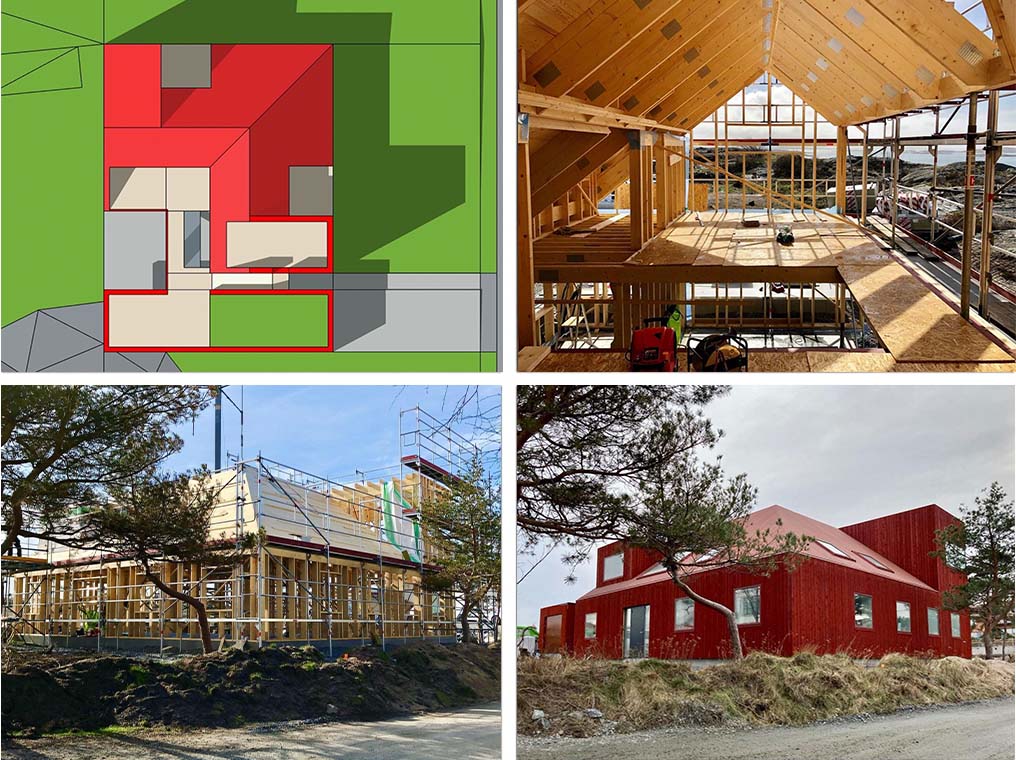
Limited architecture - Unlimited possibilities
Architecture is limited space defined by design obstructions. We use the context to set up these design obstructions in order to define space with a specific purpose and direction. The context is defined by the project limitations, such as topography, landscape, clients’ specifications, weather conditions, municipality regulations, environmental concern, and project budget. As a means to work with these limitations in a creative and productive way, we set up obstructions as game play rules that define the framework of the project. These obstructions can define concept, material, organization, construction, motion, and interaction between space and user. With this approach we see the limitations not as difficulties but rather the fuel for creativity and innovative solutions. This creates unlimited possibilities.
We do not think outside the box, we create the new box!

Follow us on Instagram
@arcticstudioarkitektur
